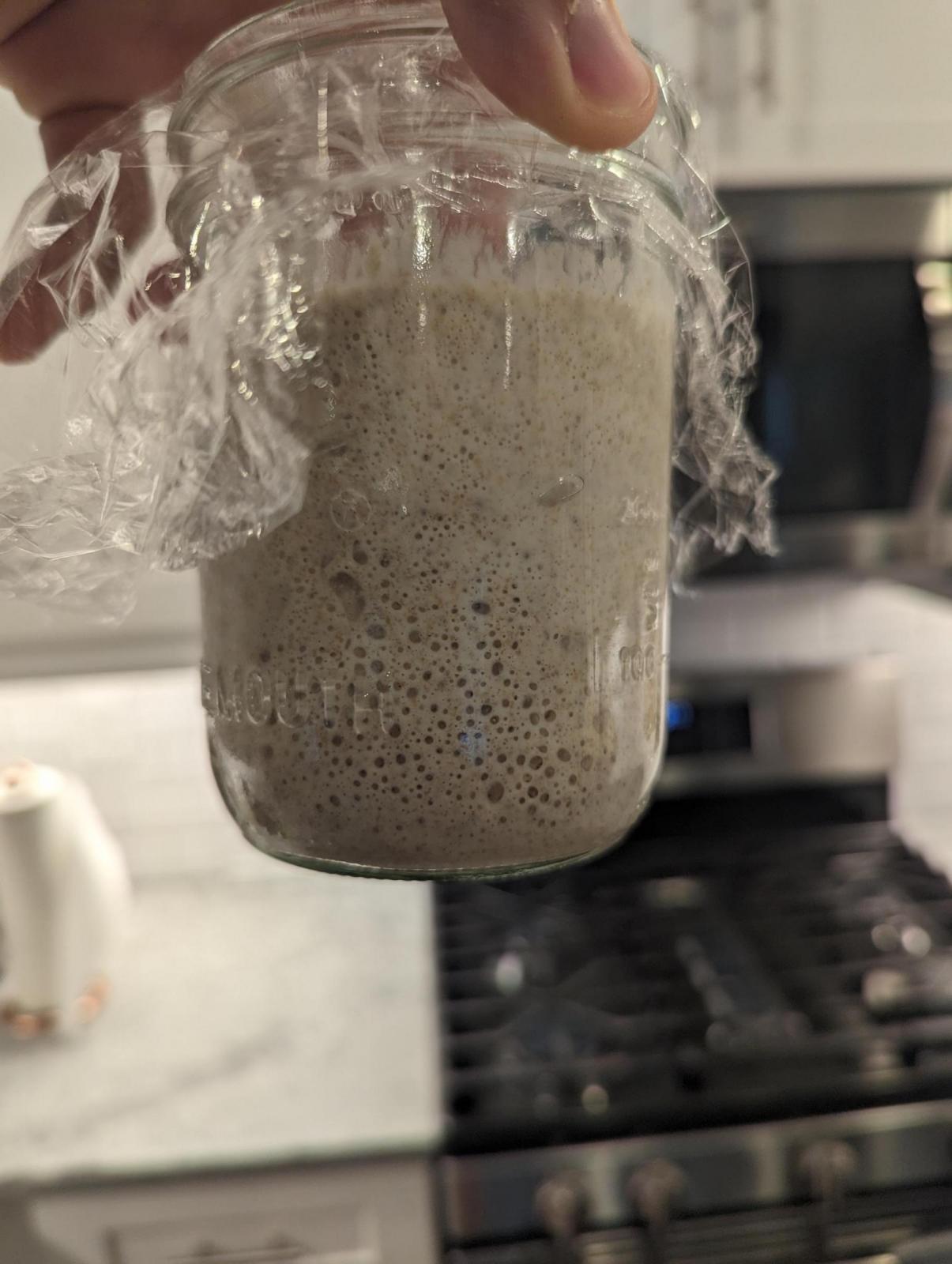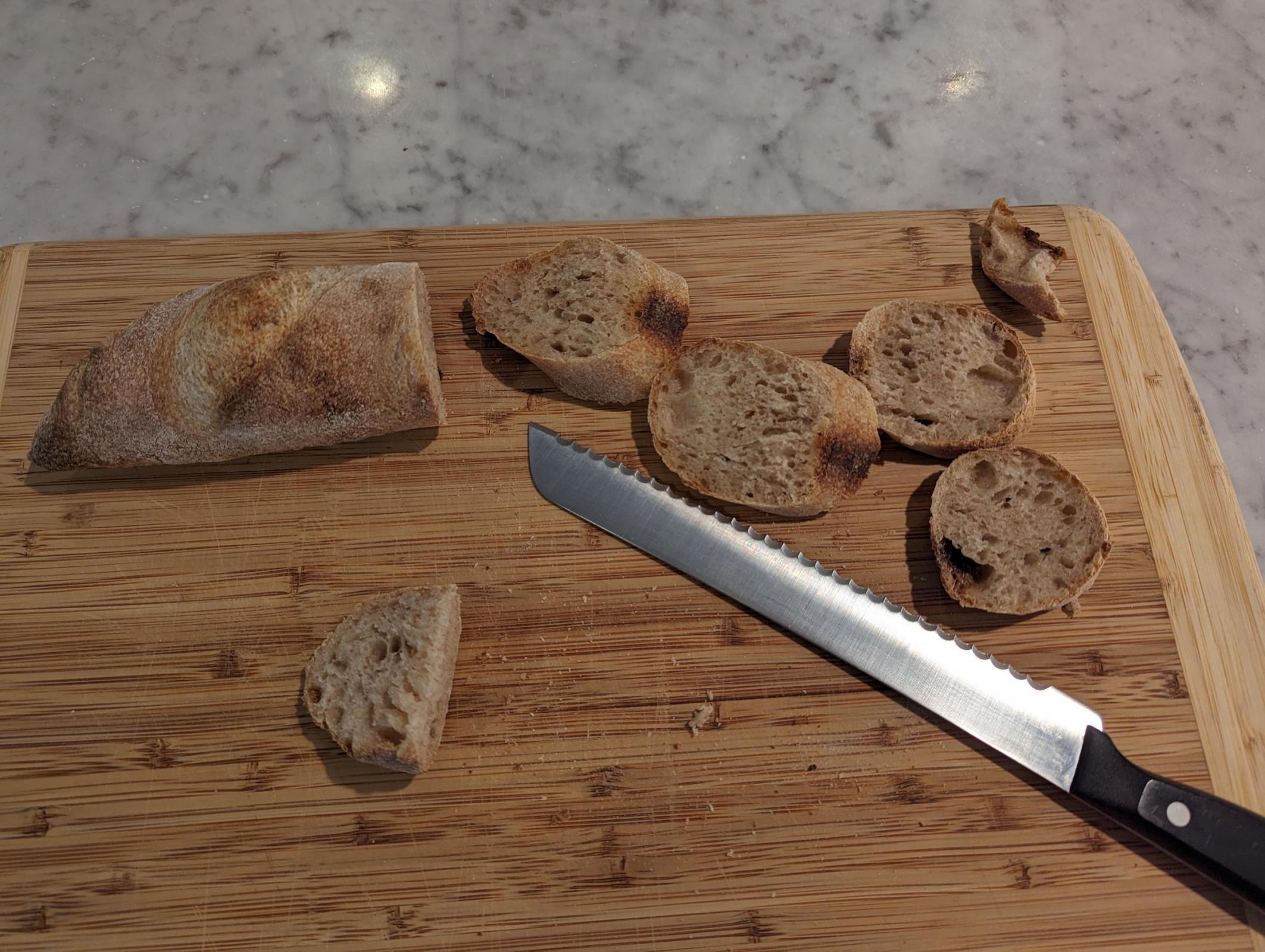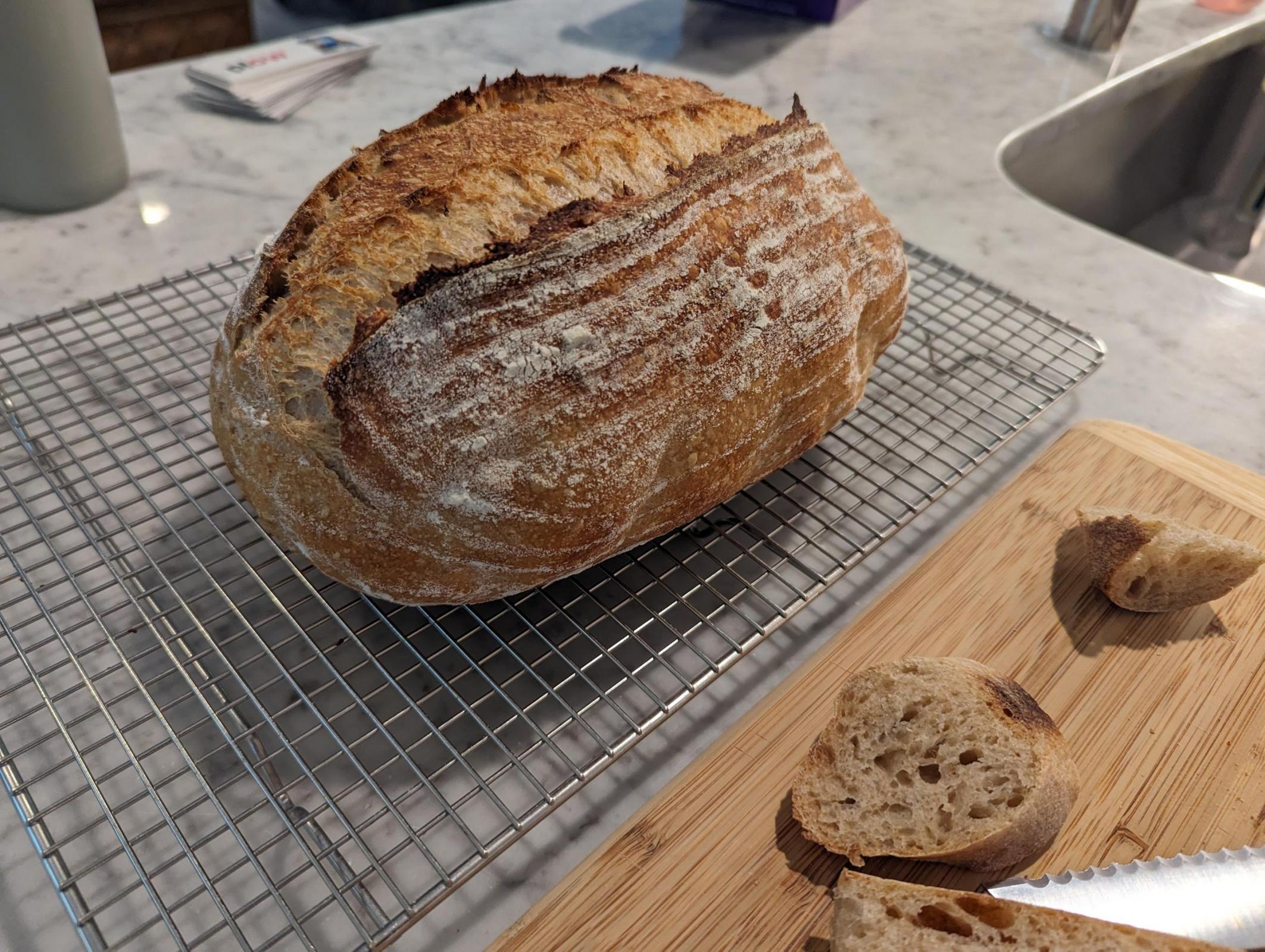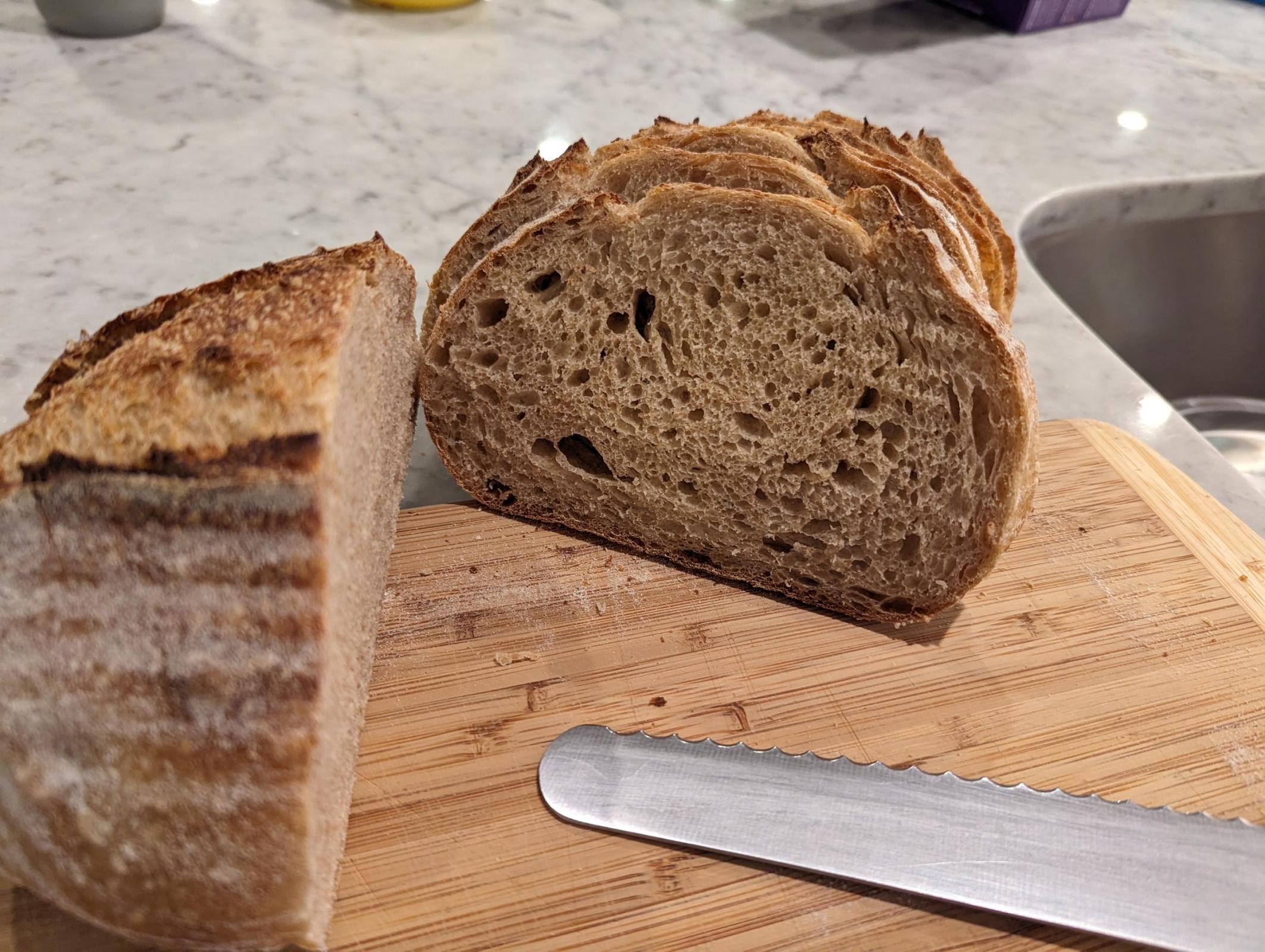I've been a long time lurker on this forum. I started baking back in 2018, getting really into rustic/lean breads (I made the Bouabsa Baguette 3 times a week during the early COVID days), and over the last year have expanded into more adventurous flavors and pizza's. This forum is such an amazing treasure trove of experience, and you guys have taught me so much over the last 5 years, so I figured I'd share this here.
About a month ago I decided to try my hand with sourdough. I tried to cultivate a starter in May 2020 but had some trouble (in hindsight, I think I was just impatient/unexperienced.) At the time there were issues getting flour in Atlanta, so I decided to just use yeast. My second/more recent starter attempt has had it's ups and downs, but after some patience and about a month it seems to be reliably doubling in about 3-4 hours. I had just ordered some flour from Central Milling, so I decided to give it a shot. Formula was:
Water - 67% (469g)
Salt - 3 ish% (18g)
Starter - 20% (140g)
Central Milling Organic Type 85 Malted - 100%, (700g)
67% is my sweet spot right now. I struggle with shaping and gluten development still, so I try to stick below 68% so I don't end up with flat boules (of which I've made many.)

My starter began doubling within about 4 hours, so I decided to build a levain. That afternoon it looked really promising, bubbly and making moves. I gave the flour and water an autolyse for ab an hour, then mixed in the starter and salt. I did about 5 minutes of slap and fold/rubaud method hybrid motions- it seemed like the dough was too small to do a 2 handed S&F, but I wanted to make sure I was actually developing something (as I said, I usually find out during shaping that I didn't develop the dough enough.) I rested it 5 minutes, then repeated once more. After that I gave it stretch and folds in the bowl every 30 minutes for 2 hours, then let it rest another 3 hours in the bowl. It had grown a little and so into the fridge it went for an overnight BF.

When I got the dough out this next morning, it looked the exact same. I was pretty frustrated- my starter seemed so active, but I guess it was no match against the fridge? I took the dough to rest in our garage, which was about 80f- 85f.

It rallied thankfully, and 4 hours later this was how it looked. I scraped it out and gently pre-shaped for a batard. I realized it wouldn't fit in my clay cooker, so I snipped of a tail of the dough. 20 minutes bench rest, then final shaped a batard and a 200g demi baguette. The batard went into a basket, baguette in the couche. I gave the baguette about 3 hours to prove, scored, and put on the stone with a loaf pan of steaming towels. It baked for 20 minutes at 450f and came out looking pretty good. We have a gas oven that runs pretty regularly and I struggle to get thin crusts from it, but this one felt nice.


After the baguette came out, I put the clay cooker in to get it up to heat. I slashed and loaded, and put it in at 450f for 20 minutes. I pulled the top off and baked for another 20 at 400f.


I was ecstatic. I have always wanted to make a loaf that looked like this- crispy on the outside but soft and pillowy inside. It tastes great to boot, I really like the Type 85. I'm not sure what sort of wizardry happened between the first time using a clay baker, malted flour, or my sourdough starter, but I hope I can replicate it.
What really stands out though is PATIENCE. With IDY I have gotten used to the timeline- it moves pretty quickly, it's reliable, and I can rely on time vs the dough and still get solid results. With this bake I had to look to the dough- how does it feel? How does it look? What's it smell like? I got very close to tossing it when I saw it in the morning, and I'm so glad I didn't. I had to wait for my starter to be reliable and vigorous (almost 4 weeks.) I had to wait for the dough to look like it was fully fermented, not "12-18 hrs", but aerated throughout. I had to give it time for the final proof, making sure to feel it and look at the way it moved in the basket instead of baking right at the 2 hour mark. When I let the dough dictate the schedule, I got something I was really impressed with.
Thanks again for all the lessons learned from yall's experience- it's been invaluable on the journey thus far!